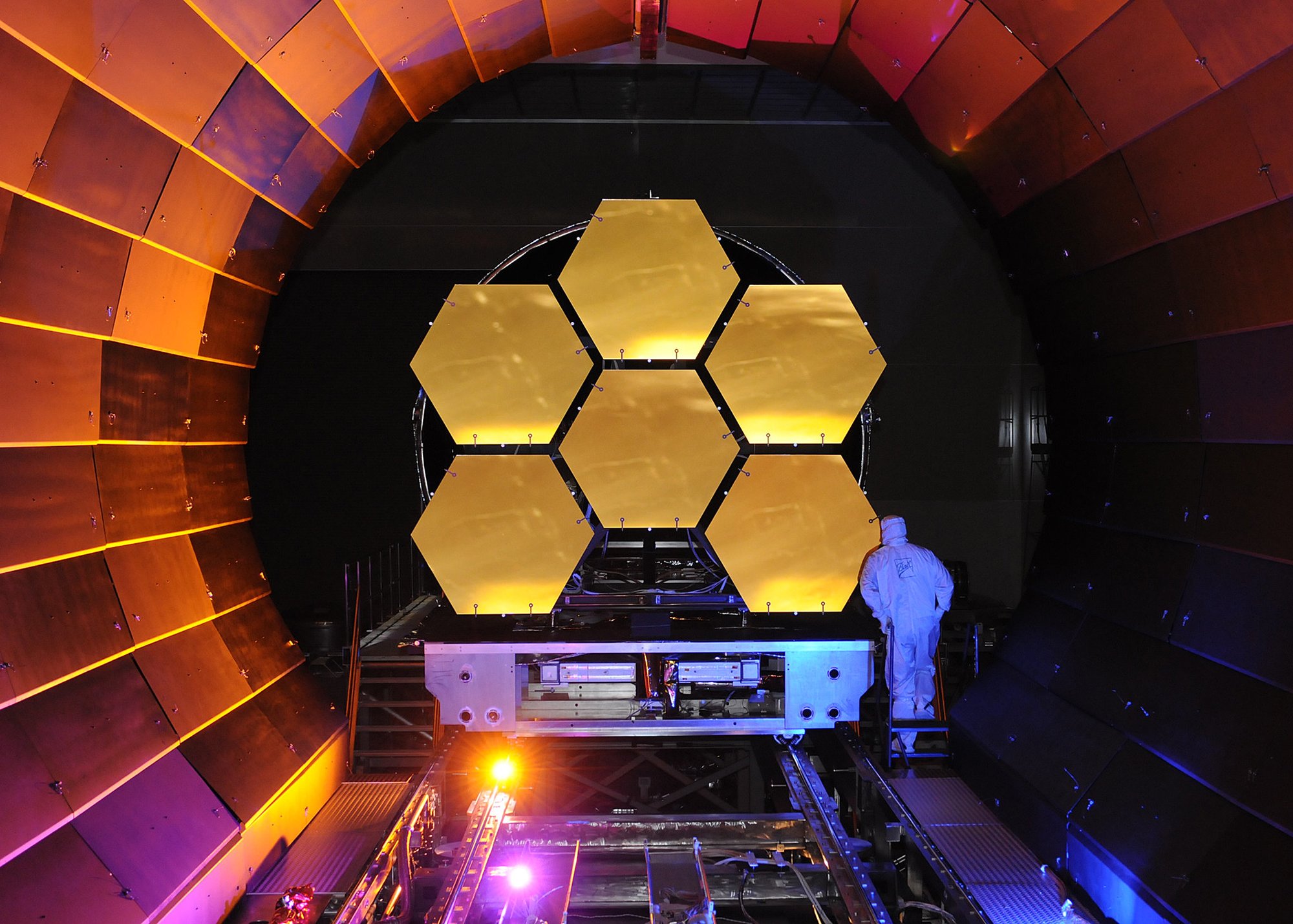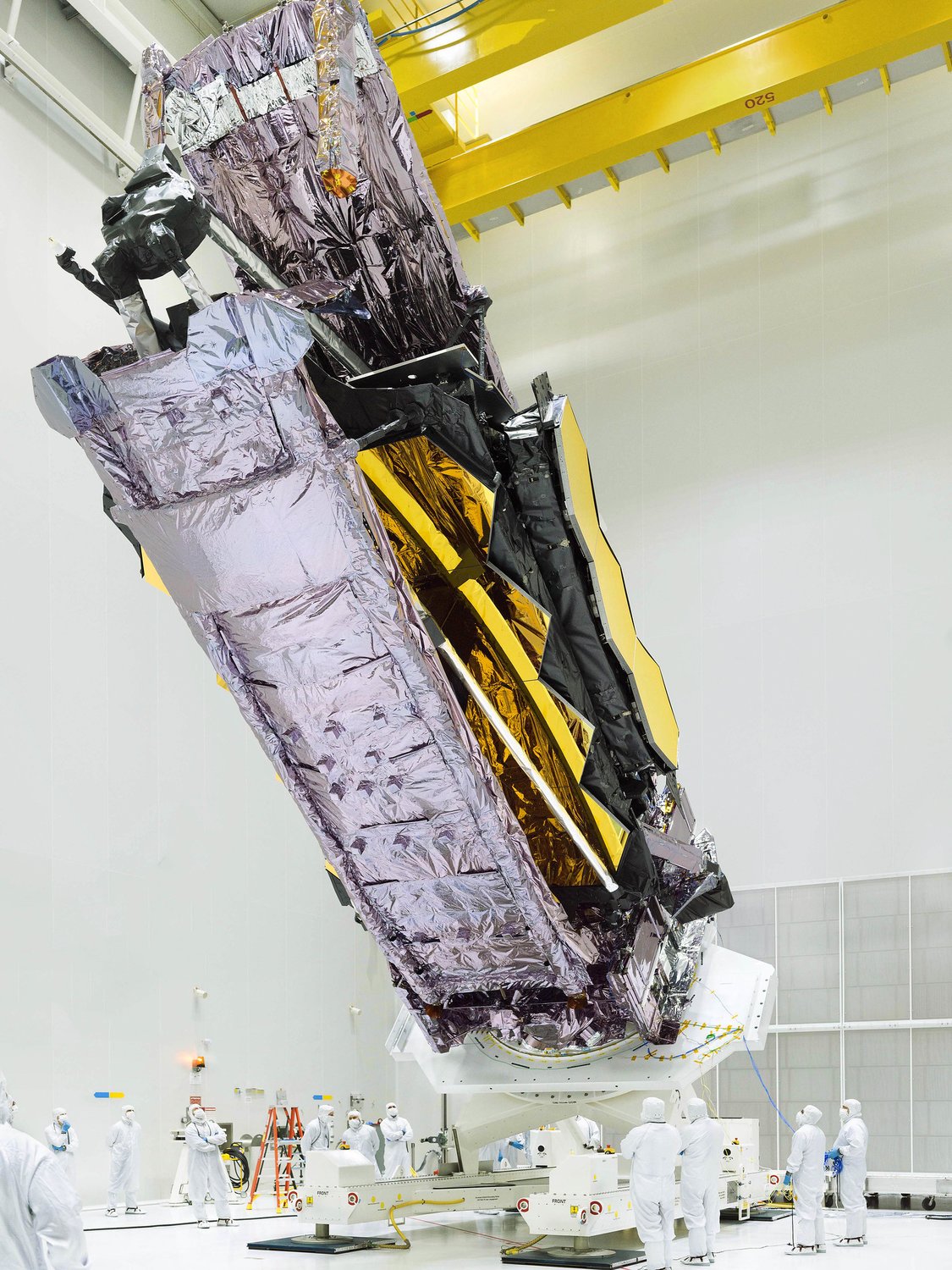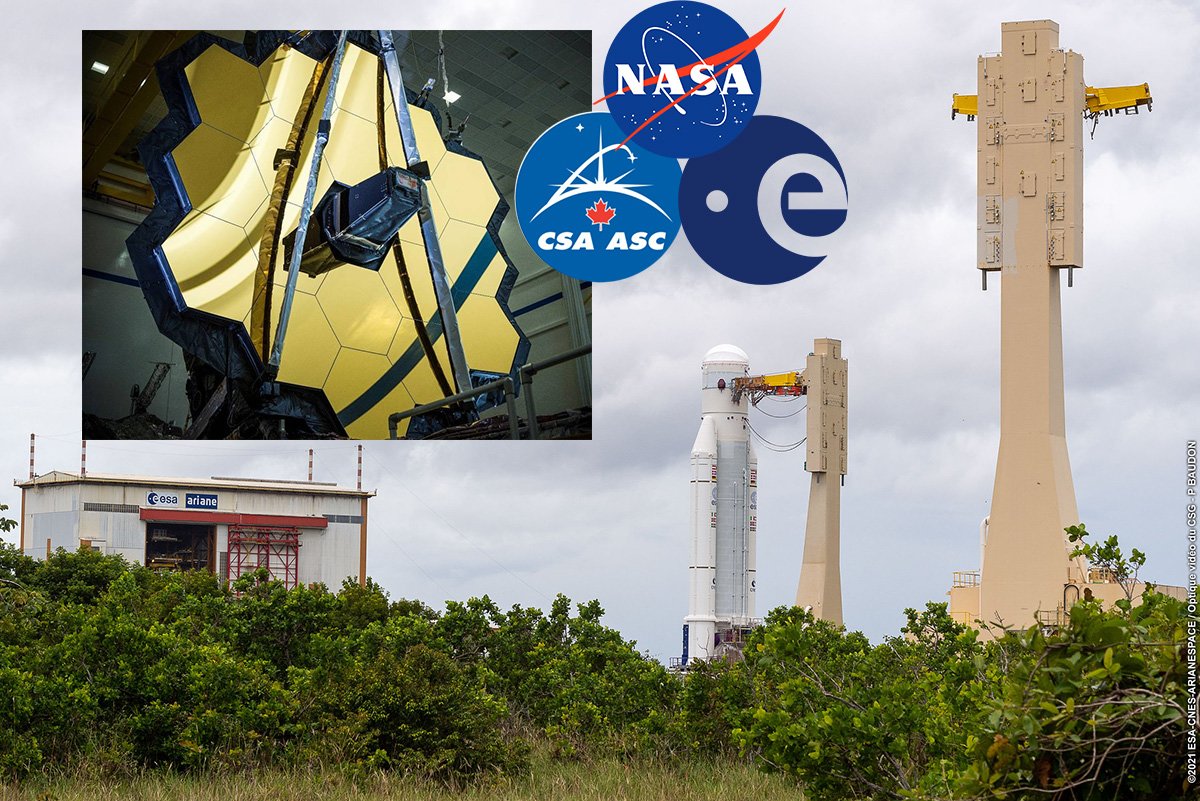NASA Set To Launch Its Massive James Webb Space Telescope on Christmas

Fully assembled, the James Webb Space Telescope has 18 hexagonal mirrors that see infrared light similar to the way a photography camera uses long exposures in dim lighting. Photo courtesy of Ball Aerospace.
Santa’s sleigh won’t be the only thing soaring through the sky this Christmas. NASA plans to launch the James Webb Space Telescope Christmas morning from French Guiana in northeast South America.
Astronomers and astrophysicists hope the multibillion-dollar telescope will help them understand the formation of planetary bodies and the origins of the universe as well as offer a look back in time to the building blocks of the cosmos.
The science behind the Webb telescope enables it to “define the chemistry of a place by analyzing its wavelengths of light,” according to a 60 Minutes segment about the telescope. It will use 18 hexagonal, gold-covered beryllium mirrors spanning 21 feet to analyze the heat and infrared light from the edge of the universe — the only signatures left from dead stars — allowing the telescope to see billions of years into the past.
The effort is international. Through a partnership between the European Space Agency, the Canadian Space Agency, and NASA, an Ariane 5 launch vehicle will propel the Webb telescope approximately 1 million miles “behind” the Earth (as viewed from the sun), according to NASA. The final destination for the JWST is the second Lagrange point (L2), a point NASA defines as a “[position] in space where the gravity of the Sun and Earth balances the centripetal force required for a spacecraft to move with [it].”

The ambitious technology has been in the works for more than 20 years. Now that its launch is imminent, the astronomers who have worked on it for so long are nervous to see whether everything goes off without a hitch.
“I’m nervous. This is rocket science,” astronomer Heidi Hammel told The Washington Post. “We are putting this amazing telescope on top of a really big rocket, and lighting a fuse and sending it into space.”
A 2021 Planetary Society article puts the telescope’s cost at $9.7 billion over 24 years, most of it spent between 2003 and 2021; however, that isn’t the project’s total cost. The European Space Agency contributed around €700 million, and the Canadian Space Agency gave approximately CA$200 million.
“This places the James Webb Space Telescope among the most expensive scientific platforms in history, comparable only to the Hubble Space Telescope and the Large Hadron Collider at CERN,” the article reads.
NASA is not taking chances with its pricey investment — it has twice delayed the launch to deal with technical issues and avoid adverse weather conditions. If all goes well, it should lift off at 7:20 a.m. Saturday.

Webb takes its name from NASA’s second administrator, James E. Webb, a Marine Corps veteran and longtime public servant who led NASA from 1961 to 1968. While President John F. Kennedy had pledged to land a man on the moon before the end of the decade, Webb thought the space program should be more than a political tool.
“Webb believed that NASA had to strike a balance between human space flight and science because such a combination would serve as a catalyst for strengthening the nation’s universities and aerospace industry,” NASA’s website reads.
That vision spurred the development of robotic spacecraft and more than 75 space science missions to study the stars and galaxies by the time man first set foot on the moon in July 1969, making Webb an apt choice to lend his name to the world’s newest space observatory.
Plans are in place to livestream the launch on YouTube. NASA extended invitations to register for the virtual launch or RSVP to the NASA social event on Facebook.
Read Next:

Lauren Coontz is a former staff writer for Coffee or Die Magazine. Beaches are preferred, but Lauren calls the Rocky Mountains of Utah home. You can usually find her in an art museum, at an archaeology site, or checking out local nightlife like drag shows and cocktail bars (gin is key). A student of history, Lauren is an Army veteran who worked all over the world and loves to travel to see the old stuff the history books only give a sentence to. She likes medium roast coffee and sometimes, like a sinner, adds sweet cream to it.
BRCC and Bad Moon Print Press team up for an exclusive, limited-edition T-shirt design!
BRCC partners with Team Room Design for an exclusive T-shirt release!
Thirty Seconds Out has partnered with BRCC for an exclusive shirt design invoking the God of Winter.
Lucas O'Hara of Grizzly Forge has teamed up with BRCC for a badass, exclusive Shirt Club T-shirt design featuring his most popular knife and tiomahawk.
Coffee or Die sits down with one of the graphic designers behind Black Rifle Coffee's signature look and vibe.
Biden will award the Medal of Honor to a Vietnam War Army helicopter pilot who risked his life to save a reconnaissance team from almost certain death.
Ever wonder how much Jack Mandaville would f*ck sh*t up if he went back in time? The American Revolution didn't even see him coming.
A nearly 200-year-old West Point time capsule that at first appeared to yield little more than dust contains hidden treasure, the US Military Academy said.












